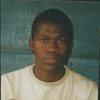Explore all the information on
Food safety
Welcome to the page about Food safety of Engormix; a source of knowledge on Food safety.
The American Feed Industry Association (AFIA) will be hosting an educational program tackling hot topics facing the animal food industry at the upcoming International Production & Processing Expo (IPPE) , happening Jan. 28-30, 2025, in Atlanta, Ga. The program, “What’s Keeping the Feed Industry Up at Night?” ...
Comments : 0
Recommendations: 0
I. INTRODUCTION Poultry feed is routinely pelleted for many reasons such as increased feed intake, feed efficiency, and feed hygiene (Abdollahi et al., 2013). However, pelleting is not without its drawbacks, particularly when using higher pelleting temperatures (Abdollahi et al., 2010). The industry has been trending towards ever higher conditioning temperatures due, at least in part, to efforts to improve feed hygiene and thus decrease reliance on in-feed antibiotics for prevention...
Comments : 0
Recommendations: 0
Grain management, food safety, genetics, biosecurity and bird health will be the featured topics at the 2025 Latin American Poultry Summit. The theme, “Factors Affecting Efficient Poultry Marketing,” will be explored through a robust program featuring technical experts, key...
Comments : 0
Recommendations: 0
Poultry industry experts at the 2025 Latin American Poultry Summit will present information on factors that affect the efficient marketing of poultry farming. The program is organized into five sessions – grain management, food safety, genetics, breeding and health – and will take place on Monday,...
Comments : 0
Recommendations: 0
The continuous pursuit of a sustainable food system remains a global priority, with increased food security and minimization of postharvest loss as primary objectives. This is a critical issue, as recent estimates from the Food and Agriculture Organization (FAO) Reports on the State of Food Security and Nutrition in the World 2023 indicate that hunger affected a staggering number of individuals ranging from approximately 691 million to 783 million people in 2022, with an approximate midrange...
Comments : 0
Recommendations: 1
Introduction Using antibiotics in sub therapeutic dosages was for a long time a general tool for the control of diseases, however, their misuse in animal husbandry has contributed to the development of multiple resistance of pathogens, deposit of drug residues in edible animal product and the environment, and the potential transfer of antibiotic resistance to human pathogens has directed research towards alternative solutions such as the use of medicinal or herbal plants...
Comments : 0
Recommendations: 0
1. Introduction Recently, the interest in “green food products” based on natural compounds and minimal processing of edible products [1,2] has gained attention in determining products’ acceptance [3]. These characteristics are crucial factors that reflect the current trends and economic growth in this sector [4], which is estimated to exceed USD 13 billion by 2024, according to reports from Global Market Insights, Inc. (Selbyville, DE, USA) [5]. From this point...
Comments : 0
Recommendations: 0
Introduction Mycotoxins are secondary metabolites produced by filamentous fungi of Aspergillus, Fusarium and Penicillium species (31). These toxic metabolites are often found in grains and a substantial percentage of animal feed (18). The most common mycotoxins harmful to animal health are aflatoxin B1 (AFL B1), zearalenone (ZEN), deoxynivalenol (DON), fumonisins B1 and B2 (FB1 and FB2), ochratoxin (OTA) and T-2 toxin (T-2) (6). Different mycotoxins induce different effects on animal...
Comments : 0
Recommendations: 0
Introduction Wheat grains are important staple foods consumed worldwide. They are used as animal feeds, ingredients in food processing, or in the brewing industries (Giraldo et al. 2019). However, pre-and post-harvest colonisation by mycotoxigenic fungi and mycotoxins can occur depending on pre-harvest weather conditions and whether effective drying regimes have been applied for safe storage (Aldred and Magan 2004). Fusarium graminearum is predominantly responsible for...
Comments : 0
Recommendations: 0
ARLINGTON, Va. – In its mission-driven work to provide the U.S. animal food industry with tools to support industry members in developing and advancing internal sustainability programs, the Institute for Feed Education and Research (IFEEDER) has added ...
Comments : 0
Recommendations: 0
1. Introduction Infectious bronchitis (IB) and Newcastle disease (ND) are highly transmissible diseases that cause substantial economic losses in the poultry industry [1, 2]. Infectious bronchitis is caused by infectious bronchitis virus (IBV), a gammacoronavirus with a single-stranded positive sense RNA genome [3]. Newcastle disease is caused by virulent strains of Newcastle disease virus (NDV), a paramyxovirus with a single-stranded negative sense RNA genome [4]. Infectious...
Comments : 0
Recommendations: 1
Jean Stoll (Global Head of Protein and Dairy at Maersk) talks about innovation, reach, transit times, and requirements of poultry shipping, in this Engormix interview....
Comments : 0
Recommendations: 0
Rendering is a vital part of sustainable agricultural production. Renderers take the parts of animals that North Americans choose not to utilize and make them into valuable products like livestock feed, pet food, biofuel, fertilizer, and other industrial products. The truth about rendering is much different than you may have been told....
Comments : 0
Recommendations: 0
Rendering involves repurposing animal co-products that would otherwise be discarded. It converts the parts of a meat animal we choose not to eat into stable, usable materials such as fuel, pet food, and livestock feed, creating a highly sustainable alternative. Below, learn more about products made from rendered materials in detail. You can discover...
Comments : 0
Recommendations: 1
Short Answer: Rendering is Recycling It’s a process that repurposes co-products(also called by-products) that would otherwise go to waste from the “meat we don’t eat.” By rendering specific materials that many North American consumers would consider inedible, such as certain fats, bones and proteins, renderers provide...
Comments : 0
Recommendations: 1
ARLINGTON, Va. – The Institute for Feed Education and Research (IFEEDER) is excited to announce the launch of its blog, IFEEDER Fodder . For nearly 15 years, IFEEDER has been at the forefront of advancing understanding and trust in sustainable feed and pet food supply chain through research and education. The IFEEDER Fodder blog will serve as a platform for industry professionals,...
Comments : 3
Recommendations: 0
Joshua Jendza (Qualitech) talks about avoiding pathogen growth while providing iron to the bird, and how iron works against Salmonella and other bacteria, during this Engormix interview....
Comments : 0
Recommendations: 2
I. INTRODUCTION The quality of poultry feed and litter are important for maintaining and improving poultry production. Poultry feed (raw materials and formulated diet) is highly variable and large safety margins are needed to buffer the nutritional variability in feed ingredients when formulating diets (Moss et al., 2021). Feed ingredients delivered to feed mills are not comprehensively analysed using current methods (i.e., wet-chemistry and NIR). This is because the large quantities...
Comments : 0
Recommendations: 1
...
Comments : 0
Recommendations: 0
INTRODUCTION Fusarium verticillioides has long been known to be a causal agent of maize ear rot but has received more attention since the discovery that fumonisins, the mycotoxins it produces, can accumulate in maize kernels (Gelderblom et al., 1988). Fumonisin consumption can lead to serious disorders in humans and animals; for example, leukoencephalomalacia in horses and pulmonary edema in swine, both are accompanied by injuries to the liver and heart; hepatic necrosis and,...
Comments : 0
Recommendations: 0


.jpg&w=3840&q=75)
















